- Home
- George Orwell
All Art Is Propaganda: Critical Essays Page 18
All Art Is Propaganda: Critical Essays Read online
Page 18
But is it not a sort of parricide for a person of my age (thirty-eight) to find fault with H. G. Wells? Thinking people who were born about the beginning of this century are in some sense Wells's own creation. How much influence any mere writer has, and especially a "popular" writer whose work takes effect quickly, is questionable, but I doubt whether anyone who was writing books between 1900 and 1920, at any rate in the English language, influenced the young so much. The minds of all of us, and therefore the physical world, would be perceptibly different if Wells had never existed. Only, just the singleness of mind, the one-sided imagination that made him seem like an inspired prophet in the Edwardian age, make him a shallow, inadequate thinker now. When Wells was young, the antithesis between science and reaction was not false. Society was ruled by narrow-minded, profoundly incurious people, predatory business men, dull squires, bishops, politicians who could quote Horace but had never heard of algebra. Science was faintly disreputable and religious belief obligatory. Traditionalism, stupidity, snobbishness, patriotism, superstition and love of war seemed to be all on the same side; there was need of someone who could state the opposite point of view. Back in the nineteen-hundreds it was a wonderful experience for a boy to discover H. G. Wells. There you were, in a world of pedants, clergymen and golfers, with your future employers exhorting you to "get on or get out," your parents systematically warping your sexual life, and your dull-witted schoolmasters sniggering over their Latin tags; and here was this wonderful man who could tell you about the inhabitants of the planets and the bottom of the sea, and who knew that the future was not going to be what respectable people imagined. A decade or so before aeroplanes were technically feasible Wells knew that within a little while men would be able to fly. He knew that because he himself wanted to be able to fly, and therefore felt sure that research in that direction would continue. On the other hand, even when I was a little boy, at a time when the Wright brothers had actually lifted their machine off the ground for fifty-nine seconds, the generally accepted opinion was that if God had meant us to fly He would have given us wings. Up to 1914 Wells was in the main a true prophet. In physical details his vision of the new world has been fulfilled to a surprising extent.
But because he belonged to the nineteenth century and to a non-military nation and class, he could not grasp the tremendous strength of the old world which was symbolised in his mind by fox-hunting Tories. He was, and still is, quite incapable of understanding that nationalism, religious bigotry and feudal loyalty are far more powerful forces than what he himself would describe as sanity. Creatures out of the Dark Ages have come marching into the present, and if they are ghosts they are at any rate ghosts which need a strong magic to lay them. The people who have shown the best understanding of Fascism are either those who have suffered under it or those who have a Fascist streak in themselves. A crude book like The Iron Heel, written nearly thirty years ago, is a truer prophecy of the future than either Brave New World or The Shape of Things to Come. If one had to choose among Wells's own contemporaries a writer who could stand towards him as a corrective, one might choose Kipling, who was not deaf to the evil voices of power and military "glory." Kipling would have understood the appeal of Hitler, or for that matter of Stalin, whatever his attitude towards them might be. Wells is too sane to understand the modern world. The succession of lower-middle-class novels which are his greatest achievement stopped short at the other war and never really began again, and since 1920 he has squandered his talents in slaying paper dragons. But how much it is, after all, to have any talents to squander.
The Art of Donald McGill
Horizon, September 19411
Who does not know the "comics" of the cheap stationers' windows, the penny or twopenny coloured post cards with their endless succession of fat women in tight bathing-dresses and their crude drawing and unbearable colours, chiefly hedge-sparrow's egg tint and Post Office red?
This question ought to be rhetorical, but it is a curious fact that many people seem to be unaware of the existence of these things, or else to have a vague notion that they are something to be found only at the seaside, like nigger minstrels or peppermint rock. Actually they are on sale everywhere--they can be bought at nearly any Woolworth's, for example--and they are evidently produced in enormous numbers, new series constantly appearing. They are not to be confused with the various other types of comic illustrated post card, such as the sentimental ones dealing with puppies and kittens or the Wendyish, sub-pornographic ones which exploit the love-affairs of children. They are a genre of their own, specialising in very "low" humour, the mother-in-law, baby's nappy, policemen's boots type of joke, and distinguishable from all the other kinds by having no artistic pretensions. Some half-dozen publishing houses issue them, though the people who draw them seem not to be numerous at any one time.
I have associated them especially with the name of Donald McGill because he is not only the most prolific and by far the best of contemporary post card artists, but also the most representative, the most perfect in the tradition. Who Donald McGill is, I do not know.2 He is apparently a trade name, for at least one series of post cards is issued simply as "The Donald McGill Comics," but he is also unquestionably a real person with a style of drawing which is recognisable at a glance. Anyone who examines his post cards in bulk will notice that many of them are not despicable even as drawings, but it would be mere dilettantism to pretend that they have any direct aesthetic value. A comic post card is simply an illustration to a joke, invariably a "low" joke, and it stands or falls by its ability to raise a laugh. Beyond that it has only "ideological" interest. McGill is a clever draughtsman with a real caricaturist's touch in the drawing of faces, but the special value of his post cards is that they are so completely typical. They represent, as it were, the norm of the comic post card. Without being in the least imitative, they are exactly what comic post cards have been any time these last forty years, and from them the meaning and purpose of the whole genre can be inferred.
Get hold of a dozen of these things, preferably McGill's--if you pick out from a pile the ones that seem to you funniest, you will probably find that most of them are McGill's--and spread them out on a table. What do you see?
Your first impression is of overpowering vulgarity. This is quite apart from the ever-present obscenity, and apart also from the hideousness of the colours. They have an utter lowness of mental atmosphere which comes out not only in the nature of the jokes but, even more, in the grotesque, staring, blatant quality of the drawings. The designs, like those of a child, are full of heavy lines and empty spaces, and all the figures in them, every gesture and attitude, are deliberately ugly, the faces grinning and vacuous, the women monstrously parodied, with bottoms like Hottentots. Your second impression, however, is of indefinable familiarity. What do these things remind you of? What are they so like? In the first place, of course, they remind you of the barely different post cards which you probably gazed at in your childhood. But more than this, what you are really looking at is something as traditional as Greek tragedy, a sort of sub-world of smacked bottoms and scrawny mothers-in-law which is a part of Western European consciousness. Not that the jokes, taken one by one, are necessarily stale. Not being debarred from smuttiness, comic post cards repeat themselves less often than the joke columns in reputable magazines, but their basic subject-matter, the kind of joke they are aiming at, never varies. A few are genuinely witty, in a Max Millerish style. Examples:
"I like seeing experienced girls home."
"But I'm not experienced!"
"You're not home yet!"
"I've been struggling for years to get a fur coat. How did you get yours?"
"I left off struggling."
JUDGE: "You are prevaricating, sir. Did you or did you not sleep with this woman?"
CO-RESPONDENT: "Not a wink, my lord!"
In general, however, they are not witty but humorous, and it must be said for McGill's post cards, in particular, that the drawing is often a
good deal funnier than the joke beneath it. Obviously the outstanding characteristic of comic post cards is their obscenity, and I must discuss that more fully later. But I give here a rough analysis of their habitual subject-matter, with such explanatory remarks as seem to be needed:
Sex.--More than half, perhaps three-quarters, of the jokes are sex jokes, ranging from the harmless to the all but unprintable. First favourite is probably the illegitimate baby. Typical captions: "Could you exchange this lucky charm for a baby's feeding-bottle?" "She didn't ask me to the christening, so I'm not going to the wedding." Also newlyweds, old maids, nude statues and women in bathing-dresses. All of these are ipso facto funny, mere mention of them being enough to raise a laugh. The cuckoldry joke is very seldom exploited, and there are no references to homosexuality.
Conventions of the sex joke:
(i) Marriage only benefits the women. Every man is plotting seduction and every woman is plotting marriage. No woman ever remains unmarried voluntarily.
(ii) Sex-appeal vanishes at about the age of twenty-five. Well-preserved and good-looking people beyond their first youth are never represented. The amorous honeymooning couple reappear as the grim-visaged wife and shapeless, moustachioed, red-nosed husband, no intermediate stage being allowed for.
Home life.--Next to sex, the henpecked husband is the favourite joke. Typical caption: "Did they get an X-ray of your wife's jaw at the hospital?"--"No, they got a moving picture instead."
Conventions:
(i) There is no such thing as a happy marriage.
(ii) No man ever gets the better of a woman in argument.
Drunkenness.--Both drunkenness and teetotalism are ipso facto funny.
Conventions:
(i) All drunken men have optical illusions.
(ii) Drunkenness is something peculiar to middle-aged men. Drunken youths or women are never represented.
W.C. jokes.--There is not a large number of these. Chamber-pots are ipso facto funny, and so are public lavatories. A typical post card, captioned "A Friend in Need," shows a man's hat blown off his head and disappearing down the steps of a ladies' lavatory.
Inter-working-class snobbery.--Much in these post cards suggests that they are aimed at the better-off working class and poorer middle class. There are many jokes turning on malapropisms, illiteracy, dropped aitches and the rough manners of slum-dwellers. Countless post cards show draggled hags of the stage-charwoman type exchanging "unladylike" abuse. Typical repartee: "I wish you were a statue and I was a pigeon!" A certain number produced since the war treat evacuation from the anti-evacuee angle. There are the usual jokes about tramps, beggars and criminals, and the comic maidservant appears fairly frequently. Also the comic navvy, bargee, etc.; but there are no anti Trade-Union jokes. Broadly speaking, everyone with much over or much under PS5 a week is regarded as laughable. The "swell" is almost as automatically a figure of fun as the slum-dweller.
Stock figures.--Foreigners seldom or never appear. The chief locality joke is the Scotsman, who is almost inexhaustible. The lawyer is always a swindler, the clergyman always a nervous idiot who says the wrong thing. The "knut" or "masher" still appears, almost as in Edwardian days, in out-of-date-looking evening-clothes and an opera hat, or even with spats and a knobby cane. Another survival is the Suffragette, one of the big jokes of the pre-1914 period and too valuable to be relinquished. She has reappeared, unchanged in physical appearance, as the Feminist lecturer or Temperance fanatic. A feature of the last few years is the complete absence of anti-Jew post cards. The "Jew joke," always somewhat more ill-natured than the "Scotch joke," disappeared abruptly soon after the rise of Hitler.
Politics.--Any contemporary event, cult or activity which has comic possibilities (for example, "free love," feminism, A.R.P.,3 nudism) rapidly finds its way into the picture post cards, but their general atmosphere is extremely old-fashioned. The implied political outlook is a Radicalism appropriate to about the year 1900. At normal times they are not only not patriotic, but go in for a mild guying of patriotism, with jokes about "God save the King," the Union Jack, etc. The European situation only began to reflect itself in them at some time in 1939, and first did so through the comic aspects of A.R.P. Even at this date few post cards mention the war except in A.R.P. jokes (fat woman stuck in the mouth of Anderson shelter,4 Wardens neglecting their duty while young woman undresses at window she has forgotten to black out, etc. etc.). A few express anti-Hitler sentiments of a not very vindictive kind. One, not McGill's, shows Hitler, with the usual hypertrophied backside, bending down to pick a flower. Caption: "What would you do, chums?" This is about as high a flight of patriotism as any post card is likely to attain. Unlike the twopenny weekly papers, comic post cards are not the product of any great monopoly company, and eventually they are not regarded as having any importance in forming public opinion. There is no sign in them of any attempt to induce an outlook acceptable to the ruling class.
Here one comes back to the outstanding, all-important feature of comic post cards--their obscenity. It is by this that everyone remembers them, and it is also central to their purpose, though not in a way that is immediately obvious.
A recurrent, almost dominant motif in comic post cards is the woman with the stuck-out behind. In perhaps half of them, or more than half, even when the point of the joke has nothing to do with sex, the same female figure appears, a plump "voluptuous" figure with the dress clinging to it as tightly as another skin and with breasts or buttocks grossly over-emphasised, according to which way it is turned. There can be no doubt that these pictures lift the lid off a very widespread repression, natural enough in a country whose women when young tend to be slim to the point of skimpiness. But at the same time the McGill post card--and this applies to all other post cards in this genre--is not intended as pornography but, a subtler thing, as a skit on pornography. The Hottentot figures of the women are caricatures of the Englishman's secret ideal, not portraits of it. When one examines McGill's post cards more closely, one notices that his brand of humour only has meaning in relation to a fairly strict moral code. Whereas in papers like Esquire, for instance, or La Vie Parisienne, the imaginary background of the jokes is always promiscuity, the utter breakdown of all standards, the background of the McGill post card is marriage. The four leading jokes are nakedness, illegitimate babies, old maids and newly married couples, none of which would seem funny in a really dissolute or even "sophisticated" society. The post cards dealing with honeymoon couples always have the enthusiastic indecency of those village weddings where it is still considered screamingly funny to sew bells to the bridal bed. In one, for example, a young bridegroom is shown getting out of bed the morning after his wedding night. "The first morning in our own little home, darling!" he is saying; "I'll go and get the milk and paper and bring you up a cup of tea." Inset is a picture of the front doorstep; on it are four newspapers and four bottles of milk.
This is obscene, if you like, but it is not immoral. Its implication--and this is just the implication [that] Esquire or the New Yorker would avoid at all costs--i's that marriage is something profoundly exciting and important, the biggest event in the average human being's life. So also with jokes about nagging wives and tyrannous mothers-in-law. They do at least imply a stable society in which marriage is indissoluble and family loyalty taken for granted. And bound up with this is something I noted earlier, the fact that there are no pictures, or hardly any, of good-looking people beyond their first youth. There is the "spooning" couple and the middle-aged, cat-and-dog couple, but nothing in between. The liaison, the illicit but more or less decorous love-affair which used to be the stock joke of French comic papers, is not a post card subject. And this reflects, on a comic level, the working-class outlook which takes it as a matter of course that youth and adventure--almost, indeed, individual life--end with marriage. One of the few authentic class-differences, as opposed to class-distinctions, still existing in England is that the working classes age very much earlier. They do not live
less long, provided that they survive their childhood, nor do they lose their physical activity earlier, but they do lose very early their youthful appearance. This fact is observable everywhere, but can be most easily verified by watching one of the higher age groups registering for military service; the middle-and upper-class members look, on average, ten years younger than the others. It is usual to attribute this to the harder lives that the working classes have to live, but it is doubtful whether any such difference now exists as would account for it. More probably the truth is that the working classes reach middle age earlier because they accept it earlier. For to look young after, say, thirty is largely a matter of wanting to do so. This generalisation is less true of the better-paid workers, especially those who live in council houses and labour-saving flats, but it is true enough even of them to point to a difference of outlook. And in this, as usual, they are more traditional, more in accord with the Christian past than the well-to-do women who try to stay young at forty by means of physical jerks, cosmetics and avoidance of child-bearing. The impulse to cling to youth at all costs, to attempt to preserve your sexual attraction, to see even in middle age a future for yourself and not merely for your children, is a thing of recent growth and has only precariously established itself. It will probably disappear again when our standard of living drops and our birth-rate rises. "Youth's a stuff will not endure" expresses the normal, traditional attitude. It is this ancient wisdom that McGill and his colleagues are reflecting, no doubt unconsciously, when they allow for no transition stage between the honeymoon couple and those glamourless figures, Mum and Dad.

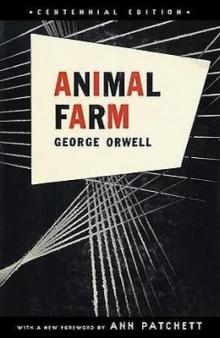 Animal Farm & 1984
Animal Farm & 1984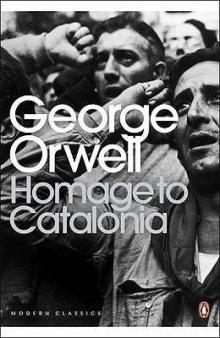 Homage to Catalonia
Homage to Catalonia Decline of the English Murder
Decline of the English Murder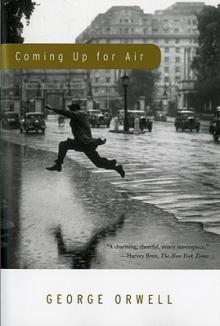 Coming Up for Air
Coming Up for Air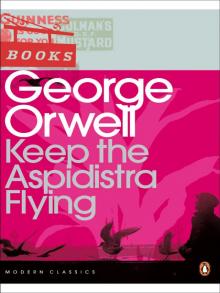 Keep the Aspidistra Flying
Keep the Aspidistra Flying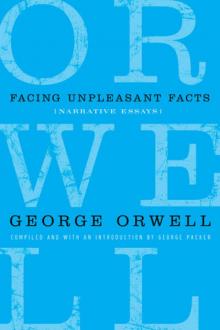 Facing Unpleasant Facts: Narrative Essays
Facing Unpleasant Facts: Narrative Essays The Complete Novels of George Orwell
The Complete Novels of George Orwell All Art Is Propaganda: Critical Essays
All Art Is Propaganda: Critical Essays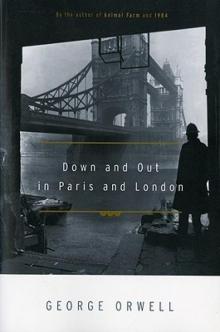 Down and Out in Paris and London
Down and Out in Paris and London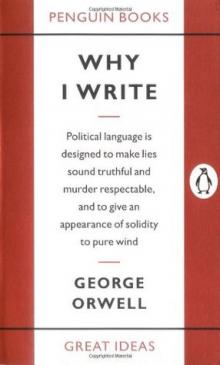 Why I Write
Why I Write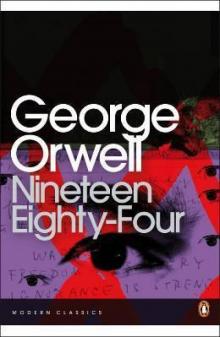 Nineteen Eighty-Four
Nineteen Eighty-Four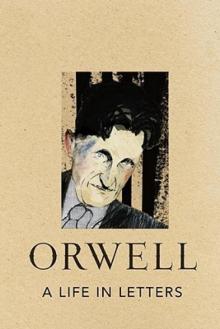 A Life in Letters
A Life in Letters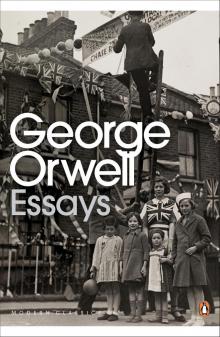 Essays
Essays A Clergyman's Daughter
A Clergyman's Daughter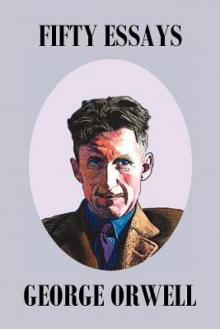 Fifty Orwell Essays
Fifty Orwell Essays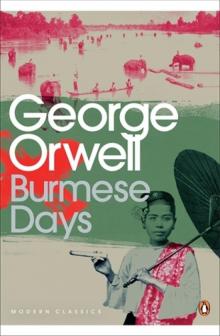 Burmese Days
Burmese Days Shooting an Elephant
Shooting an Elephant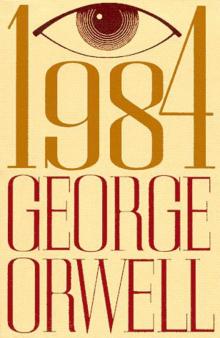 1984 (Penguin)
1984 (Penguin)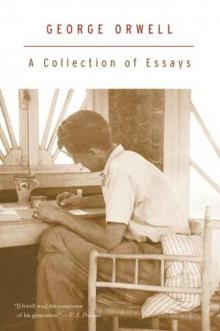 A Collection of Essays
A Collection of Essays 1984
1984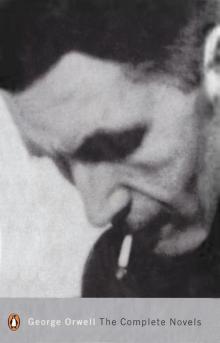 The Complete Novels
The Complete Novels All Art Is Propaganda
All Art Is Propaganda Orwell in Spain
Orwell in Spain Animal Farm: A Fairy Story
Animal Farm: A Fairy Story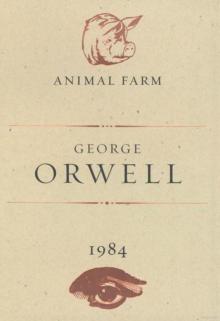 Animal Farm and 1984
Animal Farm and 1984